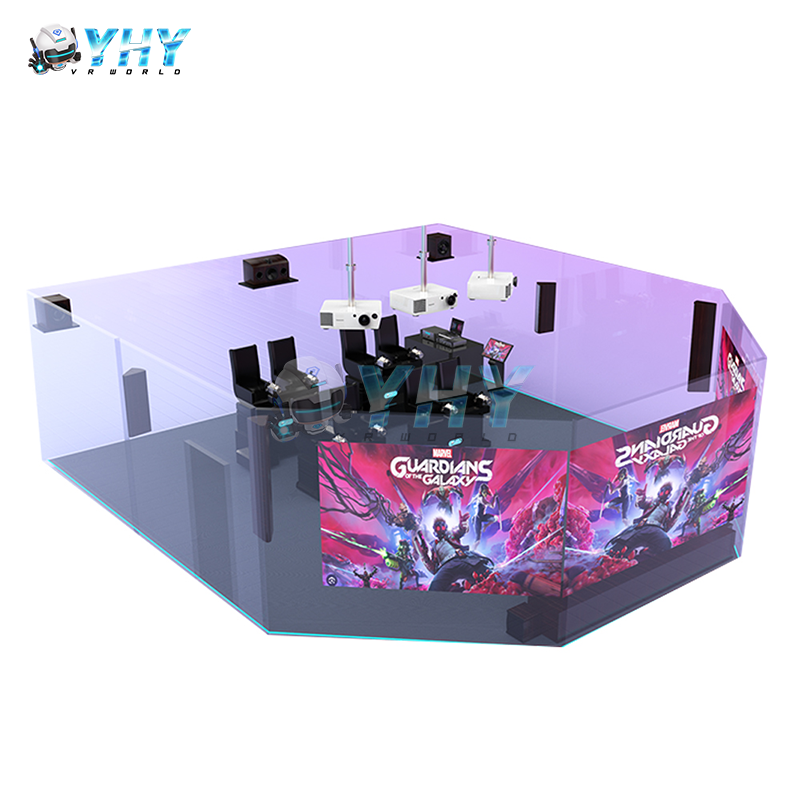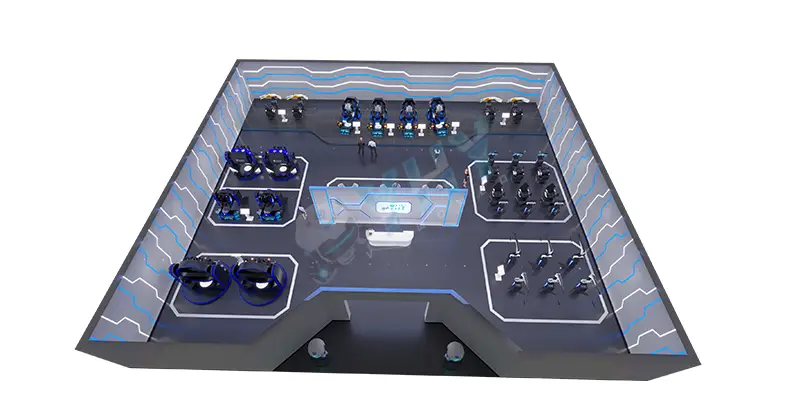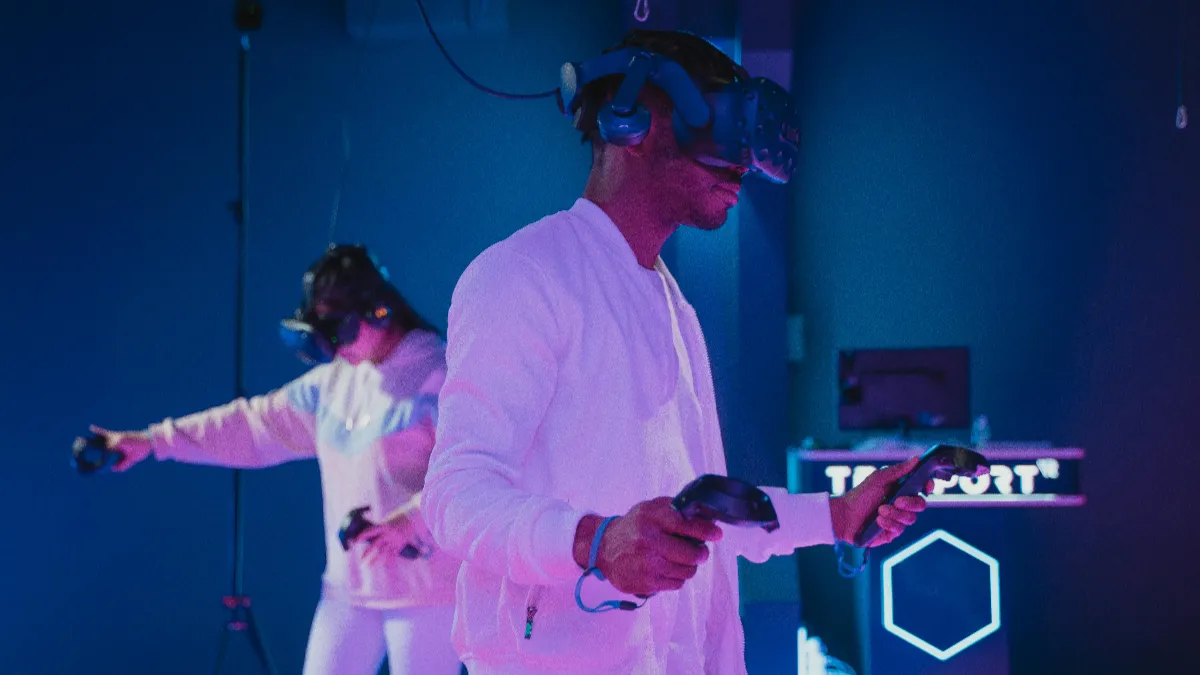Поскольку кинотехнологии продолжают развиваться, легко запутаться в терминологии и в том, что на самом деле означает каждая буква «D», когда вы смотрите захватывающий фильм. Мы говорим обо всем: от 3D до XD и всех этих форматах более высокого измерения — 4D., 5Дюймовый, 6Дюймовый, и даже за его пределами. Давайте разберем каждый из них, чтобы помочь вам четко понять различия.. Не волнуйся, мы сделаем это максимально простым для восприятия!
Краткий обзор 3D, 4Дюймовый, 5Дюймовый, 6Дюймовый, 7Дюймовый, 8Дюймовый, 9Дюймовый, и кинотеатры XD
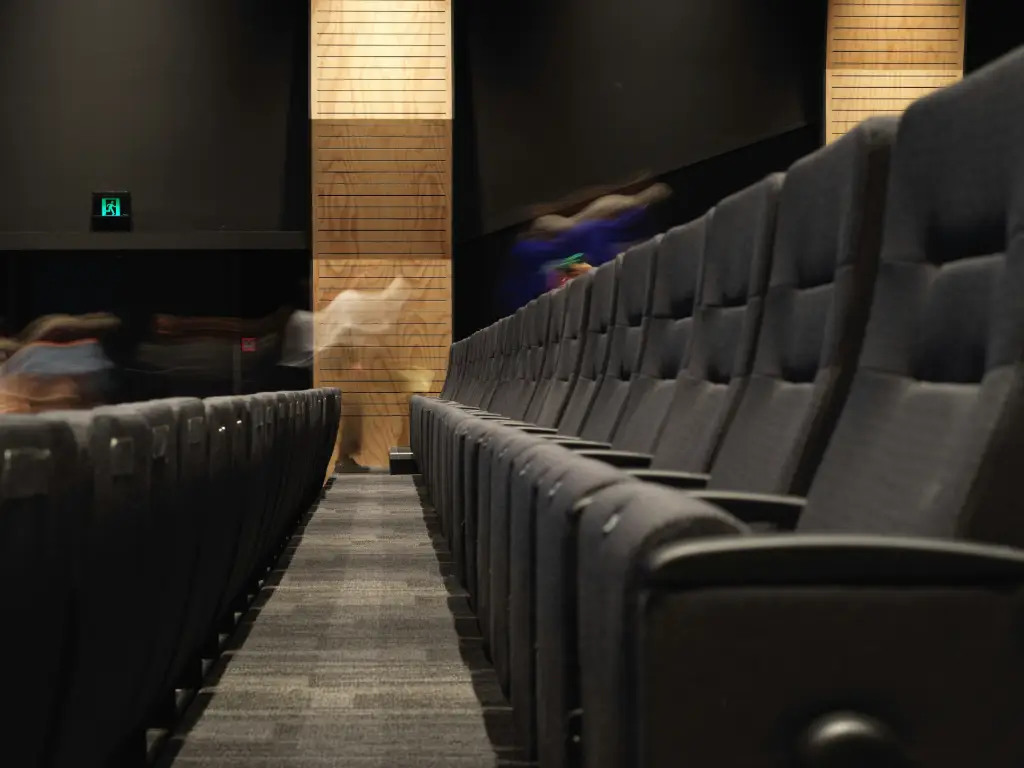
Чтобы лучше понять, чем отличается каждый формат иммерсивного кино., в таблице ниже представлено краткое сравнение их основных функций., технология, и уровень вовлеченности аудитории.
| Тип кинотеатра | Ключевые функции | Технология | Взаимодействие аудитории | Уровень погружения |
| 3D кино | Улучшает визуальные эффекты для создания глубины | Стереоскопическая проекция с поляризационными очками или очками с активным затвором. | Пассивное наблюдение | Умеренный |
| 4D кино | Добавляет физические эффекты (ветер, вода, ароматы) | Движущиеся сиденья и экологические системы, синхронизированные с действием фильма | Пассивное наблюдение, усиливается физическими ощущениями | Высокий |
| 5D кино | Интегрирует интерактивность, позволяющий контролировать аудиторию | Датчики и портативные контроллеры для взаимодействия в реальном времени | Интерактивное принятие решений | Очень высокий |
| 6D кино | Предлагает расширенную сенсорную обратную связь (трогать, изменения температуры) | Вибрирующие сиденья и нюансы воздействия на окружающую среду | Пассивный с некоторой сенсорной реакцией. | Очень высокий |
| 7D кино | Динамические изменения, основанные на реакции аудитории | Регулируемые воздушные форсунки и ароматизаторы. | Взаимодействие с фильмом в реальном времени | Чрезвычайно высокий |
| 8D кино | Сочетает принципы виртуальной реальности со сложными сенсорными эффектами. | 360-звуковое и сложное моделирование окружающей среды | Ориентированность на аудиторию, захватывающее сенсорное взаимодействие | Чрезвычайно высокий |
| 9D кино | Полностью захватывающее повествование с элементами VR. | Высокотехнологичные движущиеся платформы и системы сенсорной обратной связи | Высоко интерактивный и персонализированный | Вершина погружения |
| XD Кинотеатр | Основное внимание уделяется визуальным эффектам сверхвысокой четкости и захватывающему звуку. | Лазерная проекция и современные аудиосистемы (Долби Атмос, ДТС:Х) | Пассивный опыт просмотра | Высокий уровень визуального и звукового взаимодействия |
Что такое 3D-кинотеатр?
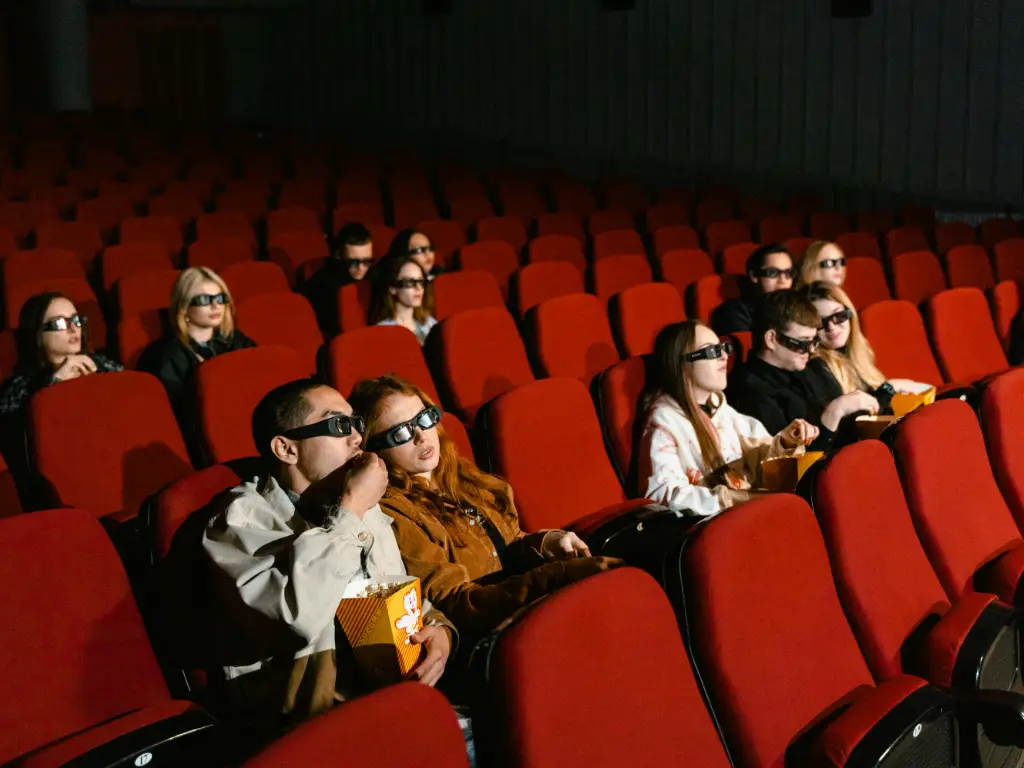
3D-кино — это захватывающий визуальный опыт, который преобразует традиционные 2D-фильмы, создавая ощущение глубины., позволяя зрителям почувствовать себя внутри фильма. Этот эффект достигается за счет стереоскопической проекции., где каждому глазу показываются два немного разных изображения, в результате создается иллюзия трехмерного пространства. Эта технология улучшает качество просмотра, создавая ощущение глубины и делая объекты и персонажей на экране более реалистичными. Широко используется в действии, научная фантастика, и анимационных фильмов для создания более увлекательного визуального повествования.. Крупные кинофраншизы, такие как Аватар и Мстители успешно использовали 3D для улучшения визуального повествования
Технология 3D основана в первую очередь на поляризационных очках или очках с активным затвором.. Polarized 3D использует разную поляризацию света для каждого глаза., в то время как очки с активным затвором синхронизируются с экраном для чередования изображений для левого и правого глаза. Однако, а 3D добавляет визуальное измерение, это остается пассивным опытом, который только улучшает внешний вид фильма. Зрители все еще наблюдают за историей, без прямого физического взаимодействия. По сравнению с традиционным 2D, 3D добавляет новый уровень погружения, но оно не задействует весь спектр человеческих чувств.
Что такое 4D-кинотеатр?
4Кино D основывается на 3D-опыте путем интеграции физических эффектов, задействующих несколько чувств., создание действительно захватывающего впечатления от просмотра. В отличие от 3D, который только улучшает визуальные эффекты, 4D включает сиденья с синхронизированным движением., воздействие окружающей среды, такое как ветер, вода, и изменения температуры, и даже ароматы, чтобы усилить связь между зрителем и фильмом.. Например, во время сцены погони, а сиденья движения может двигаться синхронно с действием, в то время как порыв ветра или брызги воды могут поразить зрителей, заставив их почувствовать себя частью окружающей среды.
Технология, лежащая в основе 4D, включает в себя сложные системы, которые контролируют эти сенсорные эффекты и гарантируют, что они идеально согласуются с действием фильма.. Сиденья с электроприводом адаптируются к интенсивности сцены., в то время как эффекты окружающей среды активируются повествованием фильма, например, вибрации во время взрывов или изменения температуры воздуха в соответствии с настройками фильма. Этот мультисенсорный опыт усиливает эмоциональное взаимодействие., сделать 4D-кинотеатр идеальным для динамичных фильмов, Аттракционы тематического парка, и захватывающие короткометражки, предлагая впечатления, выходящие за рамки традиционного пассивного просмотра.
Что такое 5D кино?
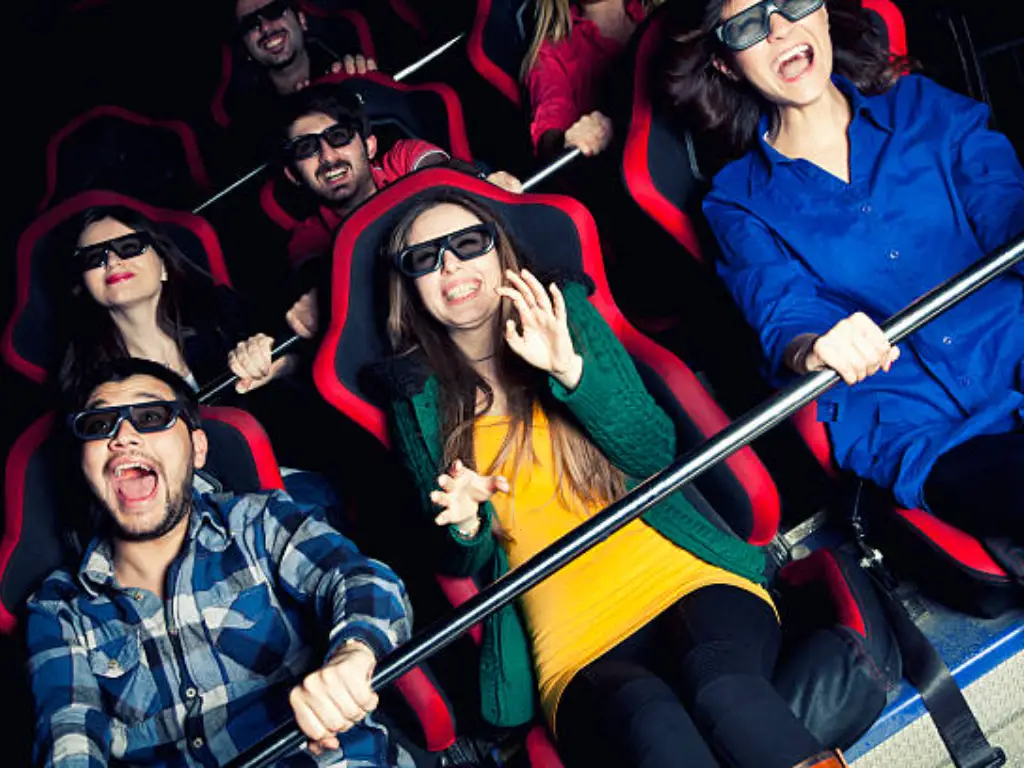
5Кинотеатр D основывается на иммерсивных эффектах 4D, интегрируя интерактивность в процесс просмотра.. В этом формате, аудитория больше не является просто пассивным наблюдателем, но может влиять на действие фильма посредством решений или взаимодействий в реальном времени.. Например, зрители могут иметь возможность контролировать определенные аспекты окружающей среды или запускать определенные эффекты, которые изменяют впечатления от просмотра.. В некоторых установках 5D, датчики или ручные контроллеры позволяют напрямую взаимодействовать с фильмом, предлагая более персонализированное и динамичное кинематографическое путешествие.
Этот повышенный уровень погружения в 5D-кино стал возможным благодаря объединению 3D-изображений., эффекты движения, и обратная связь с окружающей средой с помощью передовых интерактивных технологий. В то время как 4D обеспечивает физические ощущения, связанные с повествованием фильма., 5D добавляет дополнительный уровень взаимодействия, позволяя зрителям формировать свой опыт. Будь то управление движением или интерактивные сцены., 5Кинотеатр D предлагает впечатления нового уровня, где границы между аудиторией и фильмом стираются.
Что такое 6D кино?
6D-кинотеатр расширяет возможности 5D за счет интеграции более сложных сенсорных эффектов., такие как прикосновение и расширенная обратная связь с окружающей средой. Технология 6D направлена на создание полностью захватывающей среды, которая задействует все чувства зрителя.. Идея состоит в том, чтобы зрители почувствовали себя внутри самого фильма., с такими эффектами, как вибрация сидений, моделируемые изменения температуры, и даже физические ощущения, такие как легкий ветерок или ощущение дождя. Все эти эффекты синхронизированы с сюжетом фильма., добавление реализма в каждую боевую сцену.
6Кинотеатр D обеспечивает более высокий уровень сенсорного погружения, чем 5D, за счет более высокой степени тактильной обратной связи.. Зрители могут почувствовать фильм не только через движение или эффекты окружающей среды., но и через более тонкие физические ощущения, которые еще больше усиливают связь с миром фильма. Этот вид кино не так распространен, как 4D или 5D., но он начинает набирать обороты на специализированных площадках, ориентированных на создание интенсивных, реальные симуляции происходящего на экране. Ключевое отличие от 5D заключается в том, что 6D включает еще больший упор на сенсорное взаимодействие и тактильное взаимодействие..
Что такое 7D кино?
7Д кинотеатр это продвинутый иммерсивный опыт, который объединяет как физические эффекты, так и взаимодействие с аудиторией в режиме реального времени.. В отличие от 6D, где сенсорная обратная связь более статична и основана на заранее определенных эффектах, 7D вносит динамические изменения в окружающую среду на основе реакций зрителя.. Например, во время определенных сцен, эффекты могут меняться в зависимости от реакции аудитории, например, более интенсивные движения сиденья в моменты сильного волнения или удивления.. Этот уровень взаимодействия выводит погружение на новый уровень., где действия зрителей влияют на их кинематографический опыт.
Технология, лежащая в основе 7D-кинотеатра, включает в себя более сложный контроль окружающей среды., например, регулируемые воздушные форсунки, дозаторы ароматов, и подвижные сиденья, способные динамично реагировать на развитие фильма и вовлеченность аудитории.. Идея состоит в том, чтобы не просто вовлечь зрителя в историю, но и позволить ему взаимодействовать с ней таким образом, чтобы он чувствовал себя очень персонализированным.. Этот уровень настройки и взаимодействия знаменует собой значительный отход от более жесткого опыта, который можно найти в кинотеатрах 4D и 5D., где последствия во многом предопределены.
Что такое 8D кино?
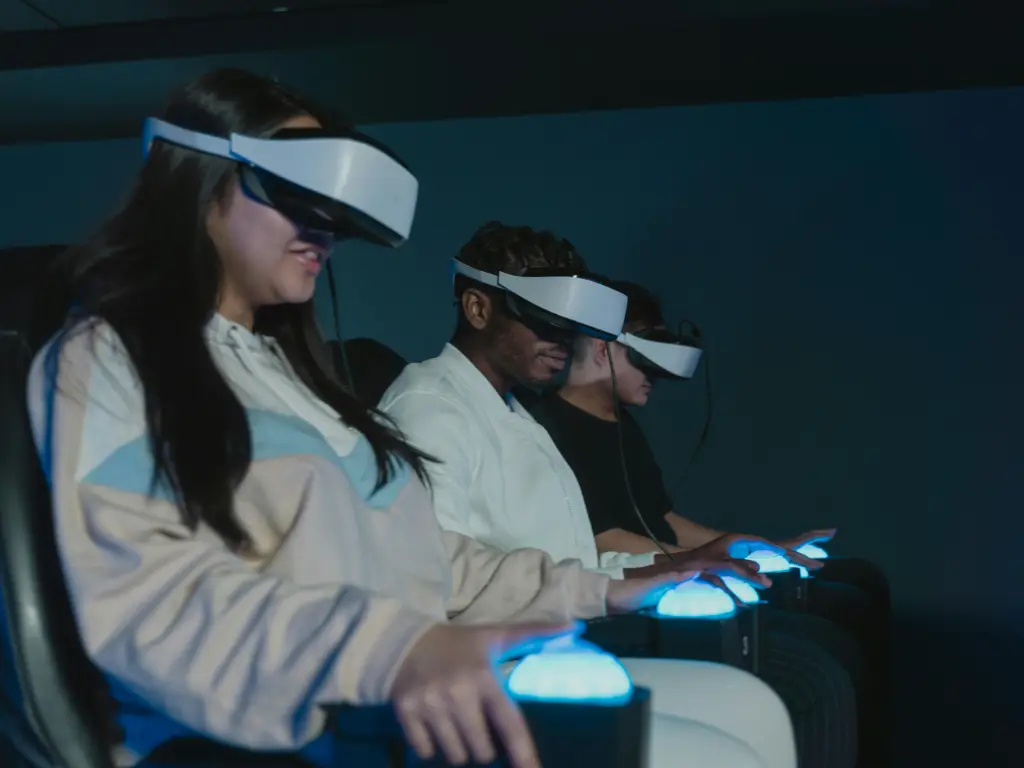
8Кинотеатр D выводит впечатления от погружения на новый уровень, сочетая передовые технологии, которые создают необычайно привлекательную среду для зрителей.. Этот формат использует принципы виртуальная реальность смешанный с традиционным кино, предлагая уникальное сочетание 3D-изображений, захватывающий звук, и сложные сенсорные эффекты. В 8D кинотеатре, зрители могут рассчитывать на то, что их окружит мир, где каждый угол представляет собой интерактивный опыт.. Будь то звук приближающихся шагов сзади или визуальные эффекты, выходящие за пределы экрана., 8D-кино меняет способ рассказа историй на экране.
Основная технология 8D включает в себя передовую звуковую инженерию., где звук располагается в пространстве на 360 градусов вокруг зрителя, создается впечатление, что каждый звук исходит с определенного направления. Более того, сложные экологические последствия, как симуляция дождя или огня, тщательно разработаны с учетом действий на экране. Это означает, что каждый поворот ощущается одновременно реальным и ощутимым.. В отличие от 7D, где взаимодействие в первую очередь ориентировано на аудиторию, 8Кинотеатр D повышает сенсорные ощущения, создавая более целостное впечатление с объемным звуком.. Этот формат становится все более популярным в тематические парки и специализированный кинематографический опыт, понравится тем, кто ищет захватывающее сенсорное приключение.
Что такое 9D кино?
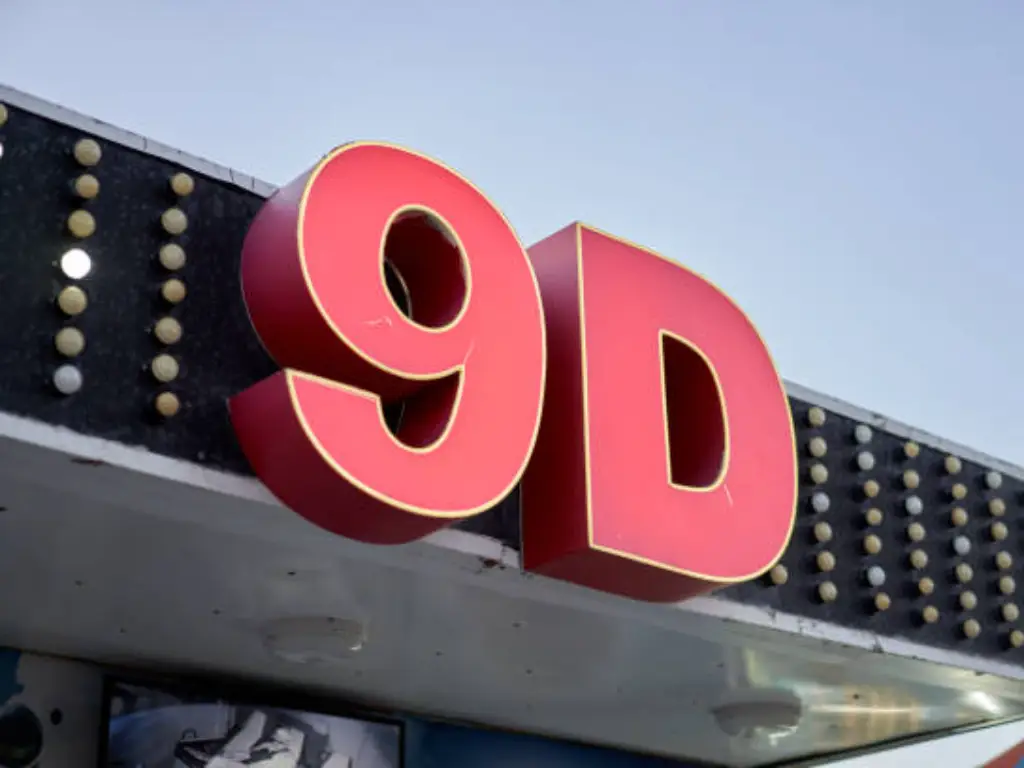
9D Cinema представляет собой вершину иммерсивных технологий в кинематографическом опыте., объединение всех аспектов предыдущих форматов в чрезвычайно увлекательную среду. Этот уникальный формат сочетает в себе 3D-изображения., динамическое движение, сенсорное взаимодействие, и элементы виртуальной реальности для создания полностью захватывающего повествования. В 9D кинотеатре, зритель не просто смотрит фильм; они чувствуют себя частью истории, с технологией, часто включающей сенсорные функции, такие как изменения температуры, выпуск аромата, и даже ощущение прикосновения. Этот формат стремится охватить все мыслимые элементы, чтобы насытить чувственное восприятие зрителя..
Технология, использованная в 9D VR Cinema Simulators включить высокоинтерактивную систему, реагирующую на движения аудитории. К ним относятся высокотехнологичные движущиеся платформы, которые меняются вместе с повествованием, и интеллектуальные системы, которые адаптируют эффекты окружающей среды на основе индивидуальных реакций.. Например, если персонаж бегает по экрану, зритель может почувствовать под собой гулкие шаги, сопровождается ветром и активными запахами, соответствующими месту происшествия. По сравнению с 8D, 9D добавляет еще более сложный уровень интерактивности., делая каждый просмотр уникальным и персонализированным. Киносимулятор 9D VR становится все более распространенным в специализированных развлекательных заведениях и в настоящее время является одной из самых инновационных категорий в отрасли. VR Arcade Machines.
Что такое XD Cinema?
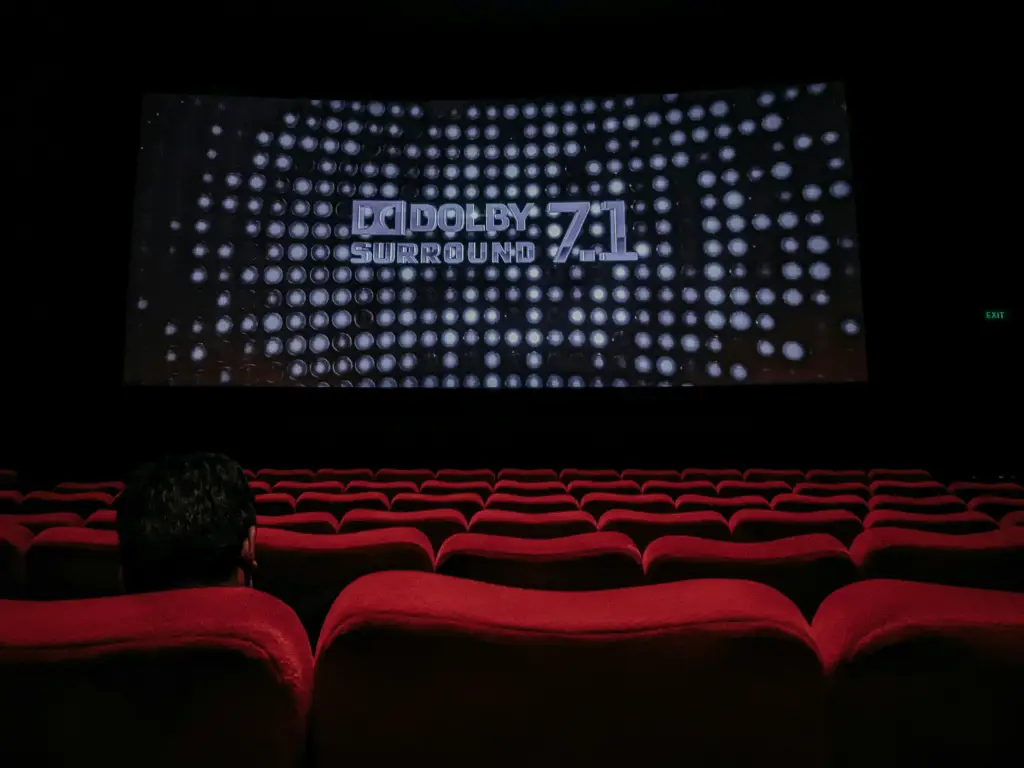
XD кинотеатр, или экстремальное цифровое кино, создан для того, чтобы доставить необыкновенные визуальные и слуховые впечатления, сосредоточившись на обеспечении более масштабного кинематографического столкновения. Одна из его выдающихся особенностей — гигантский экран., который погружает зрителей в обширные визуальные эффекты, которые намного превосходят традиционные кинотеатры.. Проекционная технология сверхвысокой четкости, обычно используют лазерные проекторы, обеспечивает яркие цвета, более резкие контрасты, и мелкие детали, которые оживляют каждую сцену. Будь то потрясающий пейзаж или динамичная последовательность действий., качество изображения в кинотеатре XD улучшается с каждой минутой, что делает его идеальным для эпических и визуально потрясающих фильмов..
Звук в кинотеатре XD не менее впечатляет.. Он часто использует передовые аудиотехнологии, такие как Dolby Atmos или DTS.:Х, которые предлагают трехмерный звук, обтекающий аудиторию, создание более захватывающей звуковой среды. Эти звуковые системы способны создать ощущение пространства и направленности., чтобы зрители могли слышать звуки сверху, позади, или все вокруг них, сделать опыт более реалистичным. Кроме того, некоторые кинотеатры XD оснащены динамическими креслами., который может двигаться или вибрировать синхронно с действием фильма, дальнейшее повышение вовлеченности зрителя. Хотя кино XD не опирается на физические эффекты, такие как 4D или 5D., он использует все преимущества изображения и звука, чтобы обеспечить непревзойденное качество пассивного просмотра..
Разница между 3D, 4Дюймовый, 5Дюймовый, 6Дюймовый, 7Дюймовый, 8Дюймовый, 9Дюймовый, и кинотеатры XD
При обсуждении различных форматов кино, важно понимать, как каждый “Дюймовый” система отличается по технологии, опыт аудитории, и сенсорные эффекты, включенные в процесс просмотра. В следующей таблице суммированы ключевые различия между этими системами иммерсивного кино., обеспечивая четкое сравнение их уникальных особенностей.
| D-система | Визуальный | Движение | Эффекты | Интерактивность | VR/AR |
| 3Дюймовый | ✅ | ❌ | ❌ | ❌ | ❌ |
| 4Дюймовый | ✅ | ✅ | ✅ | ❌ | ❌ |
| 5Дюймовый | ✅ | ✅ | ✅ | ✅ | ❌ |
| 6Дюймовый | ✅ | ✅ | ✅ | ✅ | ❌ |
| 7Дюймовый | ✅ | ✅ | ✅ | ✅ | ❌ |
| 8Дюймовый | ✅ | ✅ | ✅ | ✅ | ✅ |
| 9Дюймовый | ✅ | ✅ | ✅ | ✅ | ✅ |
| XD | ✅ | ✅ | ✅ | ❌ | ❌ |
Пожалуйста, обрати внимание: Многие форматы выше 5D часто являются маркетинговыми терминами, а не революционными новыми измерениями.. Обычно они основаны на 4D., добавление дополнительных эффектов окружающей среды или интерактивных элементов. Это различие поясняет, что эти форматы не являются совершенно новыми технологическими прорывами, а скорее усовершенствованием существующих иммерсивных впечатлений..
Глобальные тенденции в иммерсивном кино: Куда движется технология?
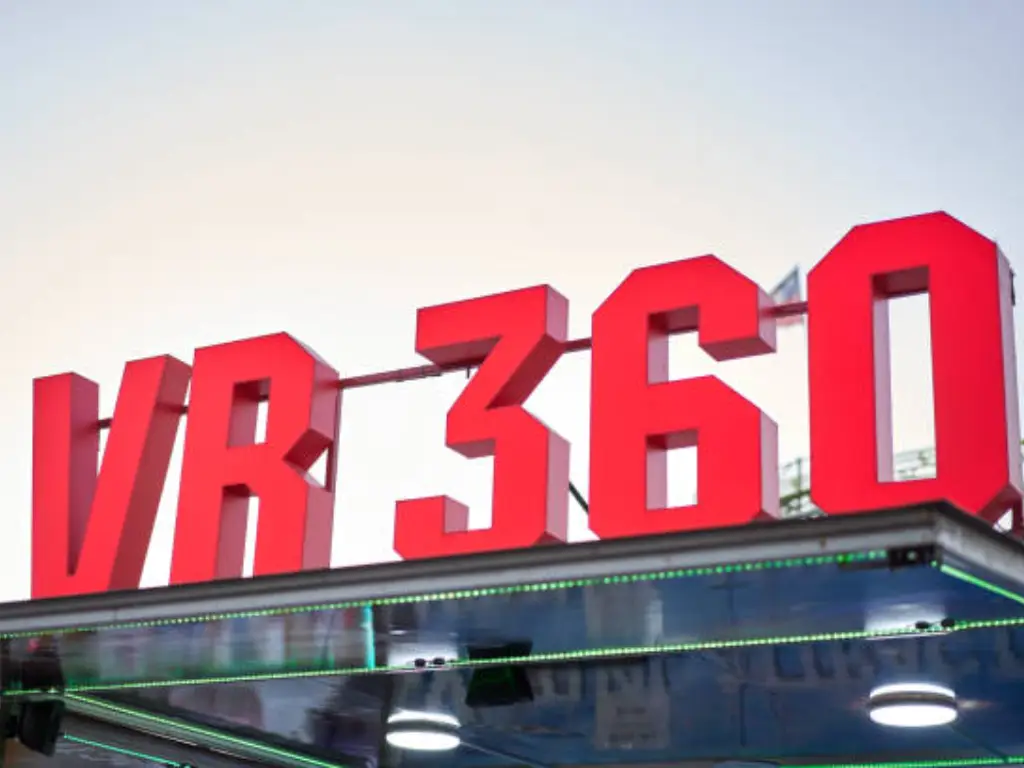
Индустрия иммерсивного кино стремительно развивается., с передовыми достижениями, открывающими новую эру взаимодействия с аудиторией. Поскольку технологии продолжают развиваться, несколько ключевых тенденций формируют будущее иммерсивного кинематографического опыта:
1. Интеграция виртуальной реальности (VR) и дополненная реальность (АР)
VR и AR становятся важными компонентами иммерсивных кинотеатров, смешивание физического и виртуального миров для создания впечатлений, выходящих за рамки традиционного просмотра. VR уже используется в 9Д кинотеатры, и поскольку оборудование продолжает улучшаться, ожидается, что он сыграет значительную роль в будущих форматах, предлагая полностью интерактивные и персонализированные кинематографические впечатления.
2. Улучшенное сенсорное погружение с помощью мультисенсорных технологий
Ожидается, что следующее поколение кинотеатров будет включать в себя еще более продвинутые мультисенсорные эффекты.. Инновации в тактильной обратной связи, запаховые технологии, и системы контроля температуры позволят зрителям испытать более широкий спектр тактильных ощущений, сделать фильмы еще более реальными. Компании также изучают, как интегрировать вкусовые или даже более тонкие физические ощущения, чтобы усилить эмоциональную вовлеченность..
3. Искусственный интеллект (ИИ) и персонализация
ИИ все чаще используется для адаптации опыта к отдельным зрителям.. Например, ИИ может отслеживать реакцию аудитории в режиме реального времени и соответствующим образом корректировать эффекты погружения.. Этот уровень персонализации выйдет за рамки интерактивных кинотеатров. (как 5D и 7D) предлагать полностью настраиваемые кинематографические путешествия, где фильм адаптируется в зависимости от вашего выбора или эмоциональных реакций.
4. Передовые аудиосистемы для полного сенсорного восприятия
Технология погружения в звук, например, Dolby Atmos, ДТС:Х, и 3D-звуковые системы, становится более изощренным, обеспечение пространственного звука на 360 градусов, который реагирует на движение зрителя. Эти аудиосистемы обеспечивают большую глубину повествования., создание звукового ландшафта, окружающего зрителя со всех сторон, повышение уровня погружения.
5. Гибридный опыт и интеграция с другими технологиями
Будущие форматы иммерсивного кино могут объединиться с другими развлекательными технологиями, например игры или живой театр. Интеграция захвата движения, живые актеры, и взаимодействие в реальном времени сотрут границы между кино, театр, и видеоигры, предоставление нового типа гибридного опыта. Это может открыть больше возможностей для захватывающего кино на аттракционах интерактивных тематических парков., живые выступления, и за его пределами.
6. Устойчивое развитие и зеленые технологии
С ростом осведомленности о влиянии высокотехнологичных кинотеатров на окружающую среду, отрасль начинает внедрять более устойчивые методы. Зеленые технологии, такие как энергоэффективные проекционные системы и экологически чистые материалы для физических эффектов, набирают обороты.. В будущем, иммерсивные кинотеатры могут все чаще интегрировать экологически безопасные решения, чтобы минимизировать выбросы углекислого газа. Поскольку эти тенденции продолжают развиваться, иммерсивные кинотеатры расширят границы повествования, изменив наше восприятие фильмов и развлечений в ближайшие годы.
Часто задаваемые вопросы
Q1: 6D, 7Дюймовый, 8Дюймовый, или 9D-кинотеатры, настоящие технологические достижения?
А: Не совсем. Хотя 3D и 4D имеют четко определенные технические стандарты. (3D для стереоскопического изображения; 4D добавление эффектов движения и окружающей среды), форматы выше 5D обычно являются маркетинговыми терминами. Они основаны на 4D, накладывая дополнительные сенсорные эффекты. (как ветер, запах, вибрация, Водяные брызги) или интерактивность (например, стрелялки в 7D), но не существует универсального стандарта того, что представляет собой каждое число..
Q2: Чем кинотеатр XD отличается от 3D или 4D?
А: XD (Экстремальный цифровой) это брендинговый термин, используемый сетями кинотеатров, такими как Cinemark.. Обычно это относится к аудиториям с большими экранами., улучшенные звуковые системы, и цифровая проекция с высокой частотой кадров. Сюда не обязательно входят движущиеся сиденья или эффекты окружающей среды, такие как 4D-кинотеатры..
Q3: Какой формат обеспечивает наилучшую рентабельность инвестиций для тематических парков или центров виртуальной реальности??
А: Это зависит от вашей аудитории и бизнес-модели.. 4D – это проверенный формат, получивший широкое признание и надежная технология.. 7D и 9D привлекают молодёжь, аудитория, ориентированная на игры, благодаря своим интерактивным функциям. XD лучше работает в обычных кинотеатрах.. Учитывайте стоимость установки, космос, и ожидаемая посещаемость при выборе.
Q4: В чем разница между 5D и 7D кинотеатром?
А: 5D-кинотеатр включает в себя 3D-изображения., сиденья движения, и воздействие на окружающую среду, такое как ветер, вода, и запах. 7D Cinema развивает эту идею, добавляя более продвинутые интерактивные элементы., например датчики движения или интерактивные игры, повышение участия пользователей и вовлеченности в процесс.

